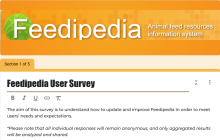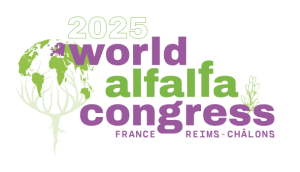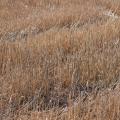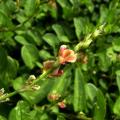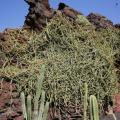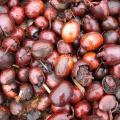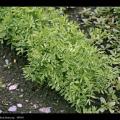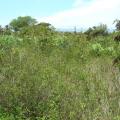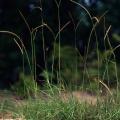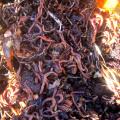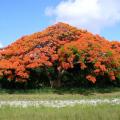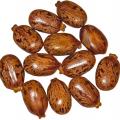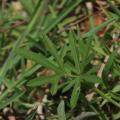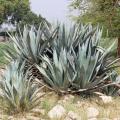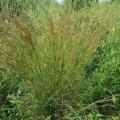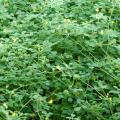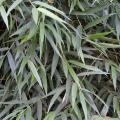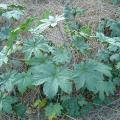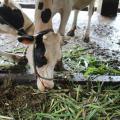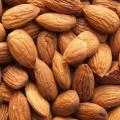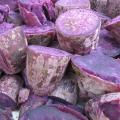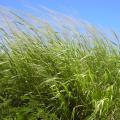Feedipedia news
After 13 years, it is time for the website to be upgraded! Before we start, we need your input.
Explore Feedipedia
|
Straw is the crop residue consisting of the dry stems and leaves left after the harvest... Read more |
Alyce clover (Alysicarpus ovalifolius (Schumach. & Thonn.) J. Léonard) is an... Read more |
Cisssus quadrangularis is a deciduous, woody climber belonging to the grape... Read more |
|
Sheanut (Vitellaria paradoxa C. F. Gaertn.) is a deciduous, small to medium-... Read more |
Lentil (Lens culinaris Medik.) is a legume mainly grown for its edible seeds (... Read more |
Hedge lucerne (Desmanthus virgatus (L.) Willd.) is a highly variable perennial... Read more |
|
Bahia grass (Paspalum notatum Flügge) is a perennial rhizomatous grass, up to 1... Read more |
Shrimp meal or shrimp waste meal is the undecomposed ground dried waste of shrimp. There... Read more |
Earthworm meal consists in processed worms reared for vermicomposting, a method of... Read more |
|
The flamboyant (Delonix regia (Bojer) Raf.) is a perennial legume tree, grown in... Read more |
The castor plant (Ricinus communis L.), also called castor bean plant or castor... Read more |
Moth bean (Vigna aconitifolia (Jacq.) Marechal) is an annual herbaceous trailing... Read more |
|
The century plant (Agave americana L.) is a perennial succulent herb, up to 10 m... Read more |
Andropogon canaliculatus Schumach. is a short perennial savanna grass native of... Read more |
The barrel medic (Medicago truncatula Gaertn.) is a small annual weedy legume... Read more |
|
Quila (Chusquea quila Kunth) is a perennial woody grass of the bamboo family... Read more |
The castor plant (Ricinus communis L.), also called castor bean plant or castor... Read more |
Elephant grass (Pennisetum purpureum Schumach.) is a major tropical grass. It is... Read more |
|
The almond tree (Prunus dulcis (Mill.) D. A. Webb) is cultivated worldwide for... Read more |
Sweet potato (Ipomoea batatas (L.) Lam.) is a plant grown for its tuberous roots... Read more |
Guinea grass (Megathyrsus maximus (Jacq.) B. K. Simon & S. W. L. Jacobs) is... Read more |
Pages
Recent resources
 Opinion paper: Phasing out of the aid provided to the livestock sector during expectedly recurrent emergencies
- Makkar, 2024. animal
Opinion paper: Phasing out of the aid provided to the livestock sector during expectedly recurrent emergencies
- Makkar, 2024. animal
Open access opinion paper that makes a case that the emergency aid do more harm than good to African countries. It is valid for all the fields of agriculture but has direct consequence for animal agriculture. The context here is the aid provided during emergencies that are foreseeable recurrent.
The role of livestock in food security, poverty reduction and wealth creation in West Africa
- Molina-Flores et al., 2020. Food and Agriculture Organization of the United Nations Accra, 2020
Livestock is key to 377 million people in West Africa and in some countries, up to 60% of the population is involved in livestock production. The demand for animal products is increasing with population growth, urbanization, growing middle class, and due to shifting consumer preferences towards animal products. To meet this growing demand, countries in West Africa must engage in accelerated sustainable livestock production undertaking. Livestock development is key to eradicate hunger and poverty. This book attempts to provide up-to-date, and reliable information on the potentials, opportunities, and challenges of the livestock subsector in West Africa.
Pulses and their by-products as animal feed
- Sherasia et al., 2017. In: Calles, T.; Makkar, H. P. S. (Eds), FAO, Food and Agriculture Organization of the United Nations, Rome, Italy
This document provides a state-of-the-art review of the recent research (published and unpublished) on the use of pulses and their by-products as animal feed. It aims at raising awareness on the use of pulses and their by-products. It highlights the nutritional role of pulses and pulse by-products as animal feed and is a contribution to the legacy of the 2016 International Year of Pulses. This document will further enhance the use of these feed resources in other continents, besides Asia, where many pulse by-products are simply dumped. It is also expected that the synthesis presented contributes to make the use of pulses and their by-products as animal feed more efficient. This document will be useful for extension workers, researchers, feed industry, policy-makers and donors alike.









